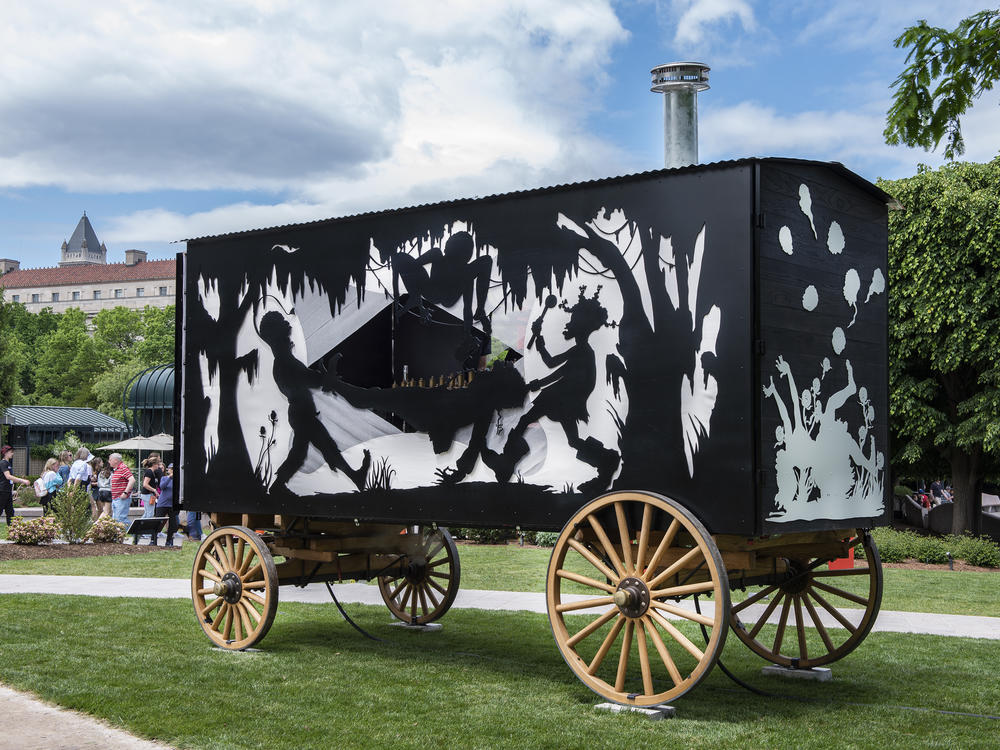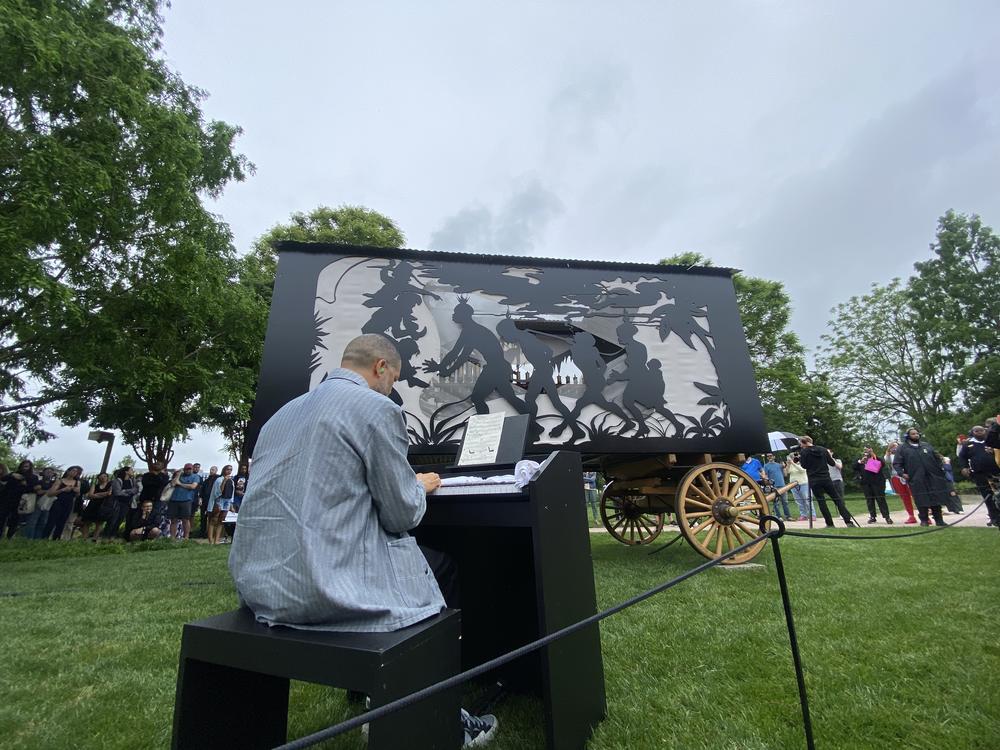Section Branding
Header Content
A slavery-era instrument is on the National Mall, singing 'songs of liberation'
Primary Content
An unusual artwork in the Sculpture Garden on the National Mall also makes unusual sounds: archaic and uncanny.
It's an old-fashioned steam calliope, an instrument once commonly seen in carnivals and on riverboats many decades ago. But this calliope was designed in 2018 by a leading American artist, Kara Walker, and plays music composed by Jason Moran, a luminary in the world of jazz.
The Katastwóf Karavan looks like a circus wagon. It's decorated with certain images Walker is famous for: silhouettes. But Walker's work is far from the sentimental black and white portraits that used to hang in oval frames in wealthy homes. It shows slavery at its most brutal in the antebellum South. Her silhouettes seem cut from history's shadows.
"It's the liminal space – that's what I'm always drawn to," Walker told NPR. "The ambivalent, the liquid, the fluid."
Walker is also drawn to a particular era of American history. She conceived of this project while visiting the New Orleans neighborhood where kidnapped Africans were held before they were sold into the nightmare of plantations. As she contemplated the paucity of monuments to the people who lived through unspeakable horror, she heard the music of a steamboat wafting down the Mississippi River. The jolly sound, she realized, was unchanged since before the Civil War. Surely it was heard by enslaved people awaiting the auction block in Algiers Point.
"How that event translates into wanting to build a calliope is kind of anyone's guess. But it meant I went into an internet rabbit hole of steam enthusiasts," Walker told an audience at the National Gallery of Art, where the piece is part of an exhibition called Afro-Atlantic Histories.
To make the Katastwóf Karavan, Walker collaborated with a craftsman in Michigan who built this 38-note aluminum and oak calliope. But instead of pumping out Americana standards, she wanted the instrument to scream and weep. To protest and dream. Sometimes it sounds like it's singing spirituals. Sometimes it sounds like an alarm.
"Musicians often talk about how sound carries," observes musician and composer Jason Moran. (Like Walker, he's a winner of the MacArthur "Genius" Award.) Like history, he says, sound carries on in waves that go on even when you stop hearing it. "Not only how it passes through you but gets to the people behind you. Gets to the people blocks away. But most of us, we don't think it ends on this planet either."
The name of the Katastwóf Karavan is taken from the Haitian Creole for "catastrophe." In a brochure accompanying the piece, Walker notes that Americans have never given a name – like "holocaust" or "catastrophe" — to an event that defined generations. "We simply say 'slavery' as if that were a legitimate job instead of what it was, a catastrophe for millions," she writes. (The "Kara" in "Karavan," she also notes, is a deliberate play on her own name.)
Art lover Alysia Thaxton was thrilled to see the Katastwóf Karavan at the Sculpture Garden at the National Gallery of Art. She's a longtime Kara Walker fan. But the silhouettes adorning the wagon – images of enslaved people chained by their necks or caught in the swamps - are not always easy to look at, she said. Jason Moran's music eased the experience.
"It was sort of a release," she said. "Not to hold it all in, so it could just keep flowing and not get bottled up. There wasn't a stuckness."
The steam calliope works through release, as it happens. Each key releases pressure built up inside the calliope's metal pipes. But Kara Walker urges caution to those tempted to use her instrument as a metaphor for today's pressures and frustrations.
"To be released from something, you have to know what's holding you," she observes. "You have to know what's really know what's binding you.
But perhaps this musical monument has something to offer at a moment when Americans are struggling with new technology, labor and debt crises, ethical consumption and a staggering wealth gap, she says. Here is a machine from the past that has learned new music. It's singing to us in solidarity.
Copyright 2022 NPR. To see more, visit https://www.npr.org.


